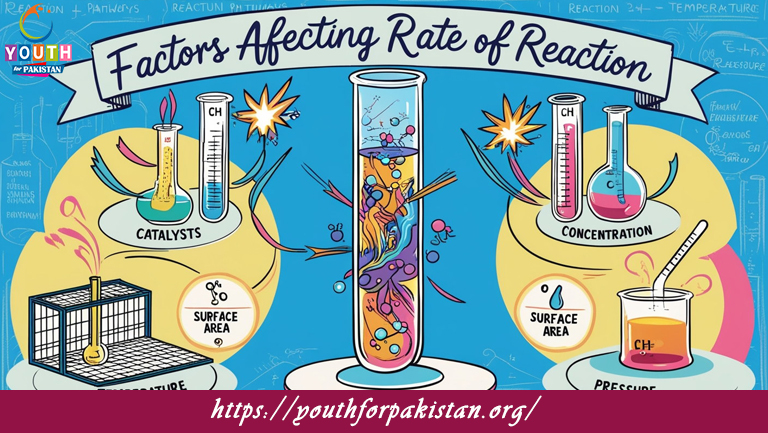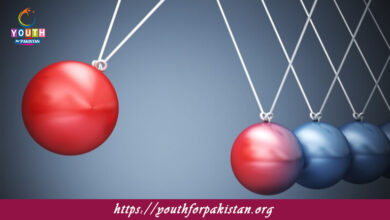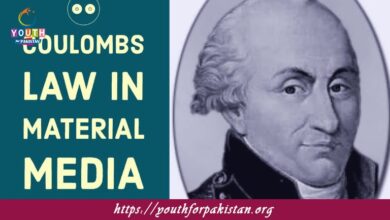Factors Affecting Rate Of Reaction MDCAT MCQs with Answers

Welcome to the Factors Affecting Rate Of Reaction MDCAT MCQs with Answers. In this post, we have shared Factors Affecting Rate Of Reaction Multiple Choice Questions and Answers for PMC MDCAT 2024. Each question in MDCAT Chemistry offers a chance to enhance your knowledge regarding Factors Affecting Rate Of Reaction MCQs in this MDCAT Online Test.
The rate of a reaction generally increases with an increase in:
a) Volume of the reaction vessel
b) Surface area of the reactants
c) Pressure of the reaction mixture
d) Temperature of the reaction
Which of the following factors does NOT affect the rate of a chemical reaction?
a) Concentration of reactants
b) Temperature
c) Pressure
d) Color of the reactants
Increasing the concentration of reactants in a reaction generally:
a) Decreases the rate of reaction
b) Has no effect on the rate of reaction
c) Increases the rate of reaction
d) Decreases the equilibrium constant
The effect of a catalyst on a reaction is to:
a) Increase the activation energy
b) Decrease the activation energy
c) Change the reaction equilibrium
d) Decrease the concentration of reactants
Which of the following changes will increase the rate of a reaction involving gases?
a) Increasing the volume of the container
b) Decreasing the temperature
c) Increasing the pressure
d) Diluting the reactants
The rate of reaction for a given reaction is generally fastest when:
a) The reactants are in their solid phase
b) The reactants are in their gaseous phase
c) The reactants are at high concentration
d) The reactants are at low temperature
The addition of a catalyst affects which aspect of a reaction?
a) The equilibrium constant
b) The activation energy
c) The concentration of reactants
d) The reaction temperature
In a reaction, increasing the temperature typically:
a) Decreases the reaction rate
b) Has no effect on the reaction rate
c) Increases the reaction rate
d) Decreases the concentration of products
The surface area of a solid reactant affects the reaction rate because:
a) It changes the activation energy
b) It affects the collision frequency
c) It alters the temperature of the reaction
d) It changes the pressure of the reaction
For a reaction involving liquids, increasing the pressure:
a) Has no effect on the rate of reaction
b) Decreases the rate of reaction
c) Increases the rate of reaction
d) Depends on the volume of the liquids
The rate of a reaction is fastest when:
a) The reactants are at a high concentration and high temperature
b) The reactants are at low concentration and low temperature
c) The reaction vessel is small
d) The reaction mixture is diluted
In a reaction involving gases, decreasing the volume of the container:
a) Decreases the reaction rate
b) Increases the reaction rate
c) Has no effect on the reaction rate
d) Changes the equilibrium constant
The effect of increasing the concentration of reactants on the reaction rate is explained by:
a) The collision theory
b) The Le Chatelier’s principle
c) The equilibrium constant
d) The catalyst theory
For a reaction where the reactant is a solid, the reaction rate can be increased by:
a) Increasing the reactant’s temperature
b) Decreasing the surface area
c) Adding more reactant
d) Decreasing the temperature
The addition of a catalyst affects the rate of reaction by:
a) Increasing the concentration of reactants
b) Increasing the temperature of the reaction
c) Providing an alternative reaction pathway with a lower activation energy
d) Increasing the pressure of the reaction mixture
The rate of a reaction increases when the surface area of a reactant is:
a) Reduced
b) Increased
c) Unchanged
d) Diluted
The reaction rate of a gaseous reaction can be affected by:
a) Changing the temperature
b) Changing the concentration of the reactants
c) Changing the pressure
d) All of the above
The effect of a catalyst on the rate of reaction is to:
a) Change the equilibrium position
b) Decrease the temperature
c) Increase the concentration of reactants
d) Increase the rate of achieving equilibrium
A higher temperature typically leads to:
a) Fewer effective collisions between molecules
b) A decrease in the reaction rate
c) An increase in the reaction rate
d) No change in the reaction rate
In a reaction where the reactant is a liquid, increasing the concentration typically:
a) Has no effect on the reaction rate
b) Decreases the reaction rate
c) Increases the reaction rate
d) Depends on the temperature
The effect of pressure on the rate of reaction is most significant for:
a) Reactions involving only solids
b) Reactions involving only liquids
c) Reactions involving gases
d) Reactions at equilibrium
The effect of temperature on reaction rate can be explained by:
a) The collision theory
b) The Le Chatelier’s principle
c) The Arrhenius equation
d) The principle of conservation of mass
The presence of a catalyst in a reaction mixture:
a) Changes the equilibrium position of the reaction
b) Increases the activation energy of the reaction
c) Speeds up the rate of reaction by lowering the activation energy
d) Decreases the concentration of reactants
For reactions involving solids, increasing the surface area:
a) Reduces the rate of reaction
b) Has no effect on the reaction rate
c) Increases the rate of reaction
d) Affects only the equilibrium constant
A reaction in a closed container will typically:
a) Have its rate increased by decreasing the pressure
b) Have its rate decreased by increasing the volume
c) Have its rate increased by increasing the temperature
d) Be unaffected by changes in concentration
The activation energy of a reaction is:
a) The energy required to start the reaction
b) The energy released during the reaction
c) The energy needed to break bonds in the products
d) The energy needed to form new bonds
A reaction rate is typically fastest when:
a) The concentration of reactants is low
b) The temperature is high
c) The surface area of reactants is minimized
d) The reaction is at equilibrium
The addition of a catalyst affects the reaction by:
a) Changing the reaction products
b) Altering the reaction temperature
c) Providing an alternative pathway with a lower activation energy
d) Increasing the concentration of reactants
For a reaction in solution, increasing the concentration of a reactant generally:
a) Decreases the rate of reaction
b) Has no effect on the reaction rate
c) Increases the rate of reaction
d) Changes the activation energy
In a reaction where pressure is increased, the rate of reaction can increase if:
a) The number of moles of gaseous reactants decreases
b) The number of moles of gaseous products increases
c) The temperature decreases
d) The concentration of reactants decreases
The rate of reaction is affected by the:
a) Nature of the reactants
b) Volume of the reaction mixture
c) Concentration of the products
d) Presence of a non-reactive substance
Increasing the temperature of a reaction typically affects the reaction rate by:
a) Decreasing the number of collisions between molecules
b) Increasing the number of collisions with sufficient energy
c) Decreasing the activation energy required
d) Increasing the equilibrium constant
In a gaseous reaction, increasing the pressure generally:
a) Decreases the rate of reaction
b) Has no effect on the rate of reaction
c) Increases the rate of reaction
d) Affects only the equilibrium position
The reaction rate can be increased by increasing the surface area of:
a) Solid reactants
b) Liquid reactants
c) Gaseous reactants
d) Product molecules
A reaction rate will be affected by:
a) The shape of the reaction vessel
b) The surface area of the reactants
c) The color of the reactants
d) The volume of the solvent
In a chemical reaction, the presence of a catalyst:
a) Changes the equilibrium constant
b) Affects the reaction products
c) Provides an alternative reaction pathway
d) Increases the activation energy
The rate of a reaction involving gases can be affected by:
a) Changing the surface area of the reactants
b) Changing the concentration of the reactants
c) Changing the temperature
d) Changing the volume of the container
For a reaction at equilibrium, increasing the temperature generally:
a) Increases the rate of the forward reaction only
b) Increases the rate of the reverse reaction only
c) Increases the rates of both forward and reverse reactions equally
d) Has no effect on the equilibrium position
A higher temperature in a reaction typically leads to:
a) More collisions between molecules
b) Fewer collisions between molecules
c) Decreased frequency of effective collisions
d) Decreased activation energy
In a reaction where a catalyst is added, the rate of reaction:
a) Remains unchanged
b) Decreases
c) Increases
d) Is halved
If you are interested to enhance your knowledge regarding Physics, Chemistry, Computer, and Biology please click on the link of each category, you will be redirected to dedicated website for each category.





